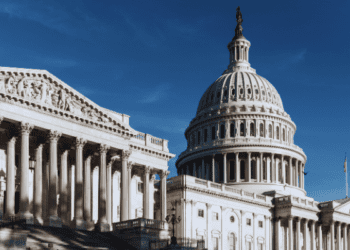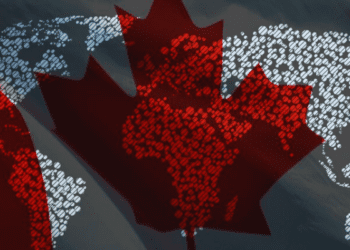On June 10, 2011, The Ottawa Citizen published an article discussing why Canada doesn’t grow more food. In the article, MLI author Larry Martin, an agricultural economist at the George Morris Centre, points to “the regulatory system that stifles innovation” and “supply management” as the causes for stagnation in food production in Canada.
Read the article by The Ottawa Citizen’s Dan Gardner below:
“Dan Gardner: Why Canada doesn’t grow more food”
The Ottawa Citizen, June 10, 2011
With rare exceptions, discussions of food policy in Canada are limited to the joys of eating organic and how hard-pressed farmers need more help from the government.
What you never hear is this: As a result of rising population and wealth, global demand for food is soaring and the world faces a food crisis unlike anything seen since the 1970s if food production does not grow rapidly. Canada is among the very few nations with the capacity to dramatically boost production. But we’re not. In fact, Canadian agriculture is stagnant. And politicians will not even discuss how we can change that.
“There is a disconnect,” says Larry Martin, an agricultural economist at the George Morris Centre, an independent think tank devoted to agricultural policy.
“Canada has the third-largest endowment of arable land per capita in the world, after Australia and Kazakhstan,” notes Martin. “We have, depending on the set of numbers you look at, nine per cent of the renewable fresh water supply in the world.” Put those two facts together, add one of the greatest commodity booms in history, and money should be pouring into Canadian food production.
But Martin found something startling when he compared the ratio of investment in agriculture with the depreciation of existing assets. Over the last decade, as China boomed and food prices soared, there was no rush to invest. “The ratio in Canada in eight of the last 10 years is less than one. So there’s less new investment coming into the food industry than there is depreciation.”
In the United States, by comparison, the worst year in the last 10 saw 40 per cent more investment than depreciation.
“It’s just astonishing when you see these numbers. We think of ourselves as a great wheat exporter but our share of the wheat market is declining. During the ’90s and early 2000s, we had between 20 and 25 per cent market share and it’s gone down steadily to 15 in the last few years.”
The causes of the stagnation are many, Martin says. A big one is a regulatory system that stifles innovation. Martin recalls testifying at a parliamentary committee alongside a wheat breeder from the University of Saskatchewan. “He went through a whole list of wheat varieties that he came up with that are much higher yielding than the wheat varieties in Canada. He couldn’t get them registered in Canada but they got registered in Montana and we now have to compete with them.”
Then there’s “supply management,” the 1970s-era policy which effectively turned dairy and poultry production into an industry-controlled cartel protected by import tariffs. It’s good for existing dairy and poultry producers because it keeps prices high and stable. And it has made the lucky people with production quotas a lot of money: the quota for a single dairy cow can go for $30,000 and estimates of the total value of production quotas range between $30 billion and $50 billion.
So what’s the catch? Canadian consumers pay far more for dairy and poultry products than they would in a free market. Supply management also makes it difficult or impossible for producers to achieve the economies of scale needed to drive costs down. Perhaps worst of all, it impedes trade liberalization.
“Our government will also continue to open new markets for Canadian business in order to create good jobs for Canadian workers,” the Conservatives promised in the Speech from the Throne. That’s good. Canada is a trading nation and the steady expansion of free trade is very much in our interest. But then came this: “In all international forums and bilateral negotiations, our government will continue to stand up for Canadian farmers and industries by defending supply management.”
Free trade talks are about concessions: “You get rid of your trade barriers and market-distorting policies and we’ll get rid of ours.” By declaring supply management a sacred cow, the government of Canada says to the people on the other side of the table, “you get rid of your trade barriers and market-distorting policies but we’ll keep ours.” It’s not hard to guess what that does to negotiations.
Of course Canada isn’t the only country with agriculture policies stuck in the 1970s. Far from it. According to the Organization for Economic Cooperation and Development, the percentage of gross farm receipts that can be chalked up to government intervention — either by direct subsidy or market restriction — is 13 per cent in Canada. In the European Union, it’s 24.9 per cent. In Japan, it’s 47.8 per cent. (The United States has some appalling agriculture policies but its farmers only owe 6.8 per cent of their income to government.) Economists loathe these policies because they inflict all sorts of collateral damage and make food production much less efficient than it could be.
Consider supply management. Who pays? Consumers who often don’t know they are. Who benefits? A small number of farmers who are highly organized and concentrated in certain ridings. Politicians who swear to defend the status quo get the gratitude of the former without incurring the wrath of the latter — while any politician who dares to even consider change gets no gratitude and lots of wrath.
“Look at us,” Larry Martin suggests, “and look at New Zealand, sitting out there in the middle of the ocean, not close to anything.” In the world of food, New Zealand is a “superpower.” And yet, thanks to daring reforms in the 1980s, New Zealand’s farmers owe almost none of their income to government support. “You think, ‘if we could do even half of what they have done wouldn’t we be in great shape?'”
Good for us. Good for the world. If only the politicians would talk about it.




